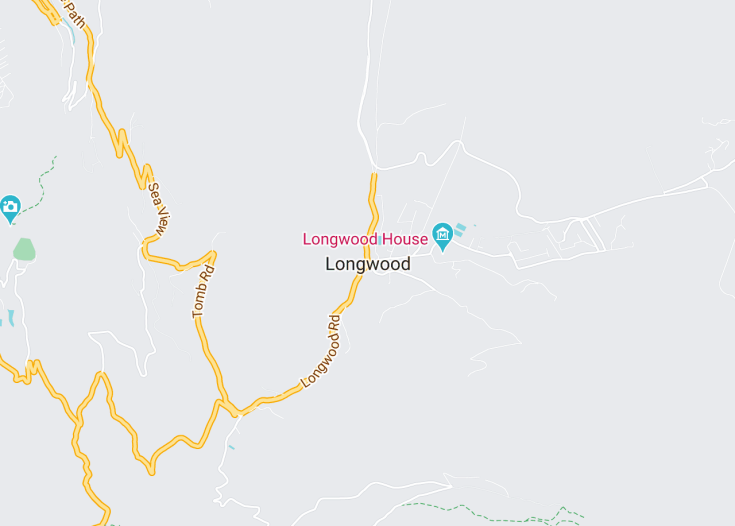Saint Helena’s Longwood offers a compelling blend of natural beauty and historical significance. This secluded destination is renowned for its association with Napoleon Bonaparte, who spent his final exile years here. Visitors can explore the preserved residence of Napoleon, nestled among lush, green landscapes that overlook the vast Atlantic. The area’s mild weather and serene environment make it an ideal spot for those looking to immerse themselves in tranquility and history.
When visiting Longwood, ensure you have enough time to explore both Napoleon’s residence and the surrounding gardens, which are rich with endemic flora.
Consider hiring a local guide when exploring Longwood to enrich your experience with historical insights and stories that bring the past vividly to life.
Top things to do & see in Longwood
Select the following sights and activities to discover best tickets and tours available in Longwood.
Longwood: A Glimpse into History
| Country | Saint Helena (United Kingdom) |
| Time in Longwood | GMT-0 |
| Language spoken | English |
| Population | 715 (Saint Helena 2021 Census) |
| Currency | Saint Helena pound (SHP) |
| Airports |
|
Longwood, located in Saint Helena, is steeped in significant historical value, most notably as the site of Napoleon Bonaparte’s exile and death. This small yet profound location holds the house where Napoleon spent his last years, now a museum run by the French government. But Longwood’s appeal goes beyond its Napoleonic heritage. It is situated amidst lush greenery, high in the island’s interior, offering spectacular views and a cool climate that contrasts with coastal regions. The area serves as a poignant reminder of the island’s role in global historical narratives, while also offering a peaceful retreat away from the world’s bustling activity.
Where is Longwood?
Longwood is located on the island of Saint Helena, a British Overseas Territory in the South Atlantic Ocean.
Distances:
| Route | Distance by car | Time by car |
|---|---|---|
| Jamestown to Longwood | 6 miles (9.7 km) | 15 minutes |
| Georgetown to Longwood | 12 miles (19.3 km) | 30 minutes |
What is Longwood famous for?
Longwood is most famous for being the residence of Napoleon Bonaparte during his exile from 1815 until his death in 1821. Today, it houses a museum dedicated to his life and times on the island.
History
1500s-1800s: Early Settlement and Strategic Importance
Longwood, located on the remote island of Saint Helena, a British Overseas Territory in the South Atlantic Ocean, was first discovered by the Portuguese in 1502. Initially uninhabited, the island served primarily as a stopover for ships sailing to Europe from Asia and South Africa. It wasn’t until the British East India Company took control in the 17th century that Longwood began to develop. The area was primarily used for agricultural purposes, taking advantage of its fertile soil and mild climate.
1815-1821: The Napoleon Era
The most renowned period in Longwood’s history began in 1815 when Napoleon Bonaparte was exiled to Saint Helena by the British government after his defeat at the Battle of Waterloo. He resided in Longwood House until his death in 1821. This period drew significant global attention to Longwood, transforming it from a largely overlooked outpost to a place of historical significance. Today, Napoleon’s residence is one of the island’s most visited sites, preserved as a museum.
1821-Present: Development and Tourism
Following Napoleon’s death, Longwood gradually returned to obscurity. However, the 20th century saw a revival of its historical importance as tourism began to develop. The establishment of the Saint Helena National Trust and improved accessibility to the island have encouraged preservation efforts and increased tourist interest, focusing on its rich history and natural beauty. Nowadays, Longwood plays a crucial role in the island’s economy and cultural identity, offering a unique glimpse into its colonial past alongside natural attractions.
Visit Longwood
Attractions and Activities
In Longwood, the primary attraction is undoubtedly Longwood House, the final residence and place of death of Napoleon Bonaparte. This historic site has been meticulously preserved to maintain its 19th-century conditions, offering a intriguing glimpse into the life of one of history’s most famous figures. Beyond the historical, Longwood’s lush landscapes provide perfect opportunities for hiking and nature walks.
- Explore Longwood House and its gardens.
- Walk along Diana’s Peak for panoramic views of the island.
- Visit nearby Plantation House, the official residence of the Governor.
Festivals in Longwood
Whilst Longwood itself may not host major festivals, Saint Helena offers several island-wide events worth attending. The annual Festival of Running in November invites athletes to partake in marathons and fun runs across various terrains, passing through historical sites including Longwood. The Saint Helena Day celebration on May 21st also brings festive cheer to the entire island, commemorating the discovery of Saint Helena with parades, dancing, and local food.
Best time to visit Longwood
The best time to visit Longwood in Saint Helena is between January and April. During these months, the weather is mild, and the rainfall is minimal, making it ideal for exploring the outdoor attractions and enjoying the lush scenery of the island.
Is Longwood worth visiting?
Longwood stands out as a destination of considerable historical intrigue and natural beauty. The allure of walking through Napoleon’s last residence, coupled with the island’s unique flora and fauna, presents a compelling case for its visitation. However, the remote location may pose a challenge for some, and the cost of travel could be considered high due to limited access. Nonetheless, for those interested in history or seeking a unique travel experience far from typical tourist paths, Longwood offers a deeply enriching experience.










